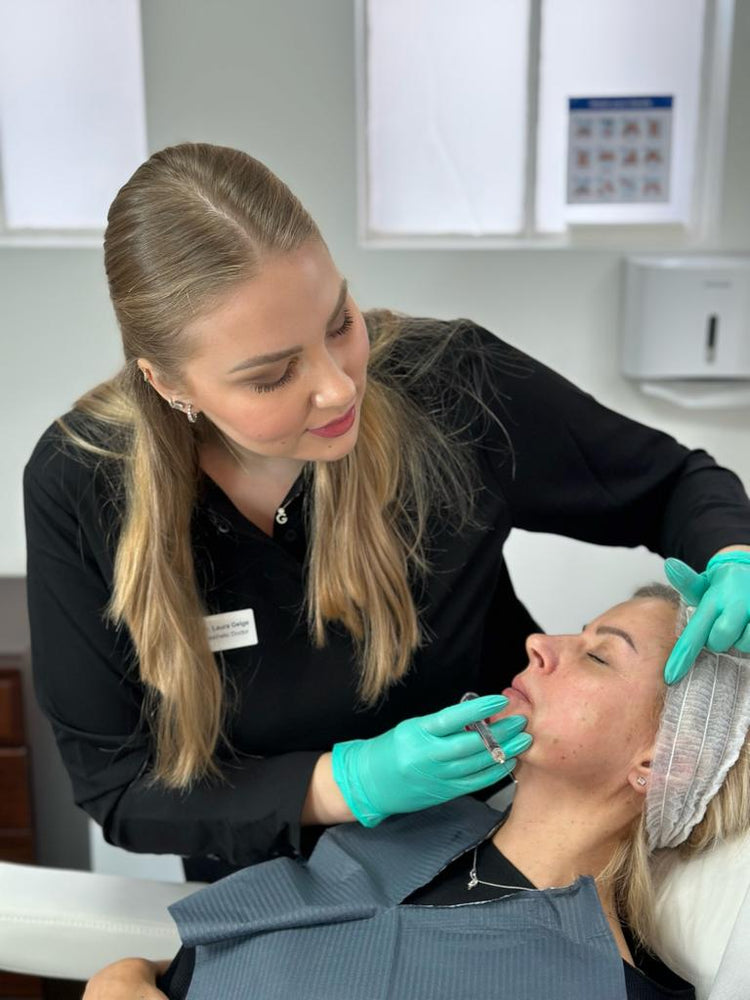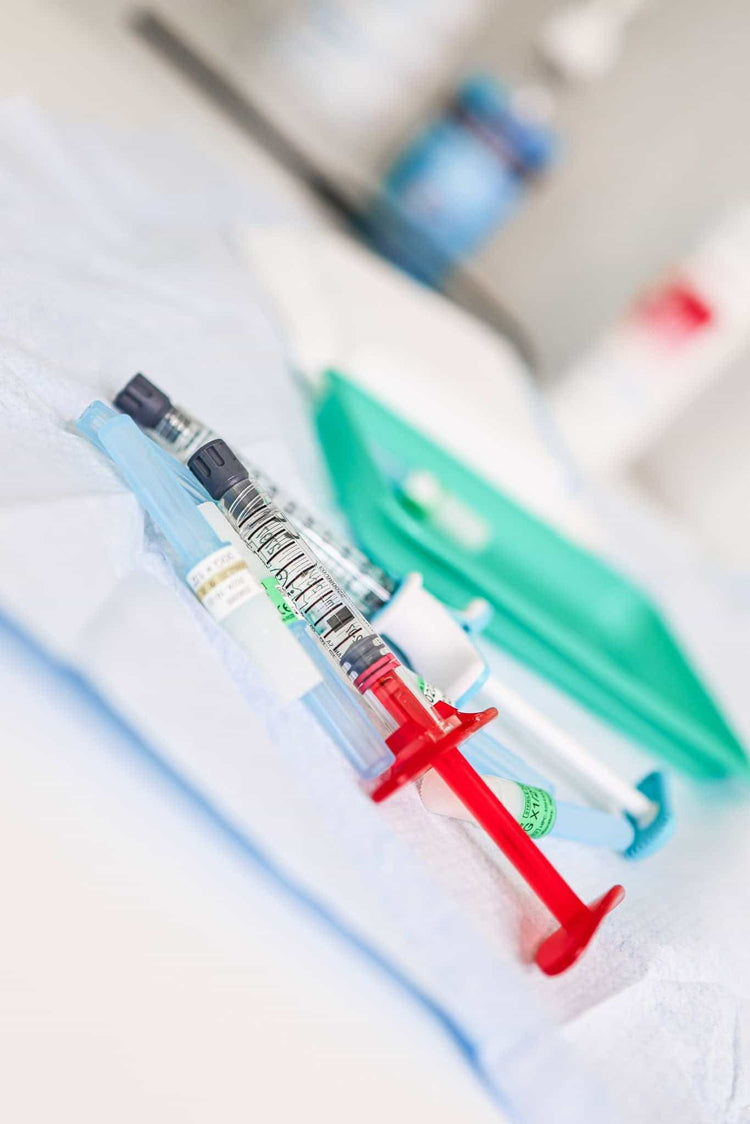Choosing the Right Filler
Achieving natural-looking results when treating nasolabial folds with dermal fillers requires careful consideration of several factors, including choosing the right type of filler. Different fillers have varying consistencies, lifting abilities, and longevity, making it crucial to select one that complements individual facial structures and desired outcomes.
Hyaluronic Acid Fillers
Hyaluronic acid (HA) fillers are a popular choice for treating nasolabial folds due to their ability to hydrate the skin, improve volume, and provide a natural-looking enhancement. HA fillers come in various formulations with different viscosities, allowing practitioners to tailor the treatment to individual patient needs. For nasolabial folds, lighter viscosity HA fillers can be used to subtly smooth out lines, while thicker consistency fillers are better suited for restoring volume and creating a more lifted appearance.
Discussing Desired Results with a Practitioner
Discussing your desired results with a practitioner is essential before undergoing any dermal filler treatment. Clearly communicate what you hope to achieve with the nasolabial fold treatment. Are you looking for subtle smoothing of lines, or do you desire a more significant lift and volume restoration? Be honest about your expectations and concerns, allowing the practitioner to recommend the most appropriate filler type and technique.
It’s also important to inquire about the practitioner’s experience with treating nasolabial folds and their preferred brands of fillers. Ask for before-and-after photos of previous patients to gauge the practitioner’s aesthetic approach and ensure it aligns with your vision.
Consultation and Assessment
Consultation and assessment are crucial steps in achieving natural-looking nasolabial fold filler results. A thorough consultation allows a practitioner to understand your individual goals, facial structure, and skin type. This understanding helps determine the most suitable type of hyaluronic acid filler, its viscosity, and the optimal injection techniques to deliver subtle enhancement or more dramatic volume restoration.
Facial Anatomy Evaluation
During the consultation, a practitioner will meticulously evaluate your facial anatomy. They will assess the depth, shape, and location of your nasolabial folds, taking into account your overall facial features and bone structure. This evaluation is essential for determining the appropriate amount and placement of filler to achieve a harmonious and natural-looking result.
The practitioner will also consider your skin type, as different skin types may react differently to fillers. For instance, individuals with thinner skin might require smaller amounts of filler to avoid an overfilled appearance.
By carefully analyzing these factors during the consultation and assessment, practitioners can develop a personalized treatment plan that addresses your specific needs and goals, ultimately leading to natural-looking nasolabial fold enhancement.
Skin Type Considerations
Consultation and assessment are crucial steps in achieving natural-looking nasolabial fold filler results. A thorough consultation allows a practitioner to understand your individual goals, facial structure, and skin type. This understanding helps determine the most suitable type of hyaluronic acid filler, its viscosity, and the optimal injection techniques to deliver subtle enhancement or more dramatic volume restoration.
During the consultation, a practitioner will meticulously evaluate your facial anatomy. They will assess the depth, shape, and location of your nasolabial folds, taking into account your overall facial features and bone structure. This evaluation is essential for determining the appropriate amount and placement of filler to achieve a harmonious and natural-looking result.
The practitioner will also consider your skin type, as different skin types may react differently to fillers. For instance, individuals with thinner skin might require smaller amounts of filler to avoid an overfilled appearance.
By carefully analyzing these factors during the consultation and assessment, practitioners can develop a personalized treatment plan that addresses your specific needs and goals, ultimately leading to natural-looking nasolabial fold enhancement.
Understanding Potential Risks and Side Effects
Understanding potential risks and side effects is an essential part of making informed decisions about any medical procedure, including dermal filler treatments. While hyaluronic acid fillers are generally considered safe with minimal risks, it’s crucial to be aware of possible complications.

Common side effects of nasolabial fold filler injections are usually mild and temporary, including redness, swelling, bruising, and tenderness at the injection site. These typically subside within a few days to a week.
Less common but more serious potential risks include infection, allergic reactions, and vascular occlusion (blockage of blood vessels). Vascular occlusion is a rare but potentially life-threatening complication that can occur if filler is injected into or near a blood vessel. It’s crucial to choose a qualified practitioner with extensive experience in dermal filler injections who will take appropriate precautions to minimize these risks.

During your consultation, be sure to discuss any pre-existing medical conditions, medications you are taking, and any allergies you have. This information will help your practitioner determine if you are a suitable candidate for nasolabial fold filler treatment and identify potential risks specific to your situation.
Injection Techniques
Achieving natural-looking results when treating nasolabial folds with dermal fillers requires careful consideration of various techniques. Different injection methods, coupled with the choice of filler type and viscosity, play a crucial role in determining the final outcome. Practitioners skilled in these techniques can tailor the treatment to each individual’s facial structure and desired aesthetic goals.
Precise Placement for Natural Enhancement
One common technique is the “laddering” method, where small amounts of filler are injected at various points along the nasolabial fold. This creates a gradual lift and softens the appearance of the lines, mimicking the natural contours of the face.
Another approach is the “fanning” technique, which involves injecting filler in a fan-like pattern to spread it evenly along the fold and create volume.
The choice between these methods depends on the individual’s facial anatomy, the desired level of lift, and the practitioner’s expertise.
Gradual Approach with Multiple Injections
Gradual Approach with Multiple Injections is a popular technique used to achieve natural-looking results when treating nasolabial folds with dermal fillers. This approach involves injecting smaller amounts of filler on multiple occasions rather than using one large injection.
- This gradual method allows for subtle enhancement and minimizes the risk of overfilling or an unnatural appearance.
- It also gives patients time to adjust to the changes, allowing for refinements and adjustments as needed.
- Multiple injections spaced out over several weeks or months allow for more precise control over the final outcome and can lead to longer-lasting results.
Using Microneedles for Subtle Refinement
Microneedles offer a unique approach to subtle refinement, particularly for addressing nasolabial folds.
These tiny needles create microchannels in the skin, stimulating collagen production and enhancing the absorption of topical skincare products.
When used in conjunction with hyaluronic acid serums or gels, microneedling can help improve the appearance of nasolabial folds by boosting hydration, smoothing fine lines, and promoting a more youthful complexion.
Aftercare Instructions
Aftercare instructions are essential for optimal results and minimizing potential complications after any dermal filler treatment.
Minimizing Swelling and Bruising
Following your nasolabial fold filler treatment, it’s important to follow your practitioner’s specific aftercare instructions carefully. However, some general guidelines include avoiding strenuous activity, touching or massaging the treated area, and applying heat or ice packs for prolonged periods.
To minimize swelling and bruising, apply cold compresses to the treated area for 10-15 minutes at a time several times a day. This helps constrict blood vessels and reduce inflammation. You can also elevate your head while sleeping to further minimize swelling.
Avoid activities that increase blood flow to your face, such as intense exercise or saunas, for at least 24 hours post-treatment.
It’s also important to stay hydrated by drinking plenty of water and avoid alcohol consumption, which can dehydrate the skin and worsen swelling.
You may experience some tenderness and bruising in the days following treatment, but these should gradually subside. If you notice any signs of infection, such as redness, warmth, or pus, contact your practitioner immediately.
Avoiding Sun Exposure and Certain Activities
Aftercare instructions are essential for optimal results and minimizing potential complications after any dermal filler treatment.
Following your nasolabial fold filler treatment, it’s important to follow your practitioner’s specific aftercare instructions carefully. However, some general guidelines include avoiding strenuous activity, touching or massaging the treated area, and applying heat or ice packs for prolonged periods.
- To minimize swelling and bruising, apply cold compresses to the treated area for 10-15 minutes at a time several times a day. This helps constrict blood vessels and reduce inflammation. You can also elevate your head while sleeping to further minimize swelling.
- Avoid activities that increase blood flow to your face, such as intense exercise or saunas, for at least 24 hours post-treatment.
- It’s also important to stay hydrated by drinking plenty of water and avoid alcohol consumption, which can dehydrate the skin and worsen swelling.
- You may experience some tenderness and bruising in the days following treatment, but these should gradually subside. If you notice any signs of infection, such as redness, warmth, or pus, contact your practitioner immediately.
Regular Follow-Up Appointments
Aftercare instructions are essential for optimal results and minimizing potential complications after any dermal filler treatment. Following your nasolabial fold filler treatment, it’s important to follow your practitioner’s specific aftercare instructions carefully. However, some general guidelines include avoiding strenuous activity, touching or massaging the treated area, and applying heat or ice packs for prolonged periods.
To minimize swelling and bruising, apply cold compresses to the treated area for 10-15 minutes at a time several times a day. This helps constrict blood vessels and reduce inflammation. You can also elevate your head while sleeping to further minimize swelling.
Avoid activities that increase blood flow to your face, such as intense exercise or saunas, for at least 24 hours post-treatment. It’s also important to stay hydrated by drinking plenty of water and avoid alcohol consumption, which can dehydrate the skin and worsen swelling.
You may experience some tenderness and bruising in the days following treatment, but these should gradually subside. If you notice any signs of infection, such as redness, warmth, or pus, contact your practitioner immediately.
Regular follow-up appointments are crucial for monitoring the results of nasolabial fold filler treatments.
These appointments typically occur a few weeks after the initial treatment and allow the practitioner to assess the placement of the filler, check for any complications, and make any necessary adjustments.
During follow-up appointments, you can also discuss your satisfaction with the results and address any concerns you may have. If more filler is needed to achieve your desired outcome, it can be added during these appointments.
Regular follow-up visits ensure long-lasting and natural-looking results by allowing for ongoing monitoring, adjustments, and maintenance of your treatment.
- How Many Botox Units For Nasal Flare? - May 3, 2025
- Dermal Fillers Near Camberley, Surrey - May 1, 2025
- Botox Nefertiti Neck Lift In Barnes, London - May 1, 2025
